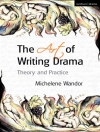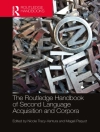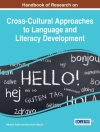The principles for enabling children to become fully proficient multilinguals through schooling are well known. Even so, most indigenous/tribal, minority and marginalised children are not provided with appropriate mother-tongue-based multilingual education (MLE) that would enable them to succeed in school and society. In this book experts from around the world ask why this is, and show how it can be done. The book discusses general principles and challenges in depth and presents case studies from Canada and the USA, northern Europe, Peru, Africa, India, Nepal and elsewhere in Asia. Analysis by leading scholars in the field shows the importance of building on local experience. Sharing local solutions globally can lead to better theory, and to action for more social justice and equality through education.
Daftar Isi
Editors’ Foreword
Part 1: Introduction
1. Multilingual Education: A Bridge too Far? – Ajit Mohanty
Part 2: Multilingual Education: Approaches and Constraints
2. Fundamental Psycholinguistic and Sociological Principles Underlying Educational Success for Linguistic Minority Students – Jim Cummins
3. Multilingual Education for Global Justice: Issues, Approaches, Opportunities – Tove Skutnabb-Kangas
4. Designing Effective Schooling in Multilingual Contexts: Going Beyond Bilingual Models – Carol Benson
Part 3: Global and Local Tensions and Promises in Multilingual Education
5. The Tension Between Linguistic Diversity and Dominant English – Robert Phillipson
6. Literacy and Bi/multilingual Education in Africa: Recovering Collective Memory and Expertise – Kathleen Heugh
7. Empowering Indigenous Languages: What can be Learned from Native American Experiences? – Teresa L. Mc Carty
8. Education, Multilingualism and Translanguaging in the 21st Century – Ofelia Garcia
9. Privileging Indigenous Knowledges: Empowering Multilingual Education in Nepal – David Hough, Ram Bahadur Thapa Magar, Amrit Yonjan-Tamang and Iina Nurmela
10. The Caste System Approach to Multilingualism in Canada: Linguistic and Cultural Minority Children in French Immersion – Shelley K. Taylor
Part 4: Multilingual Education in Theory and Practice – Diversity in Indigenous/Tribal Experience
11. The Contribution of Post-colonial Theory to Intercultural Bilingual Education in Peru: An Indigenous Teacher Training Programme – Susanne Jacobsen Perez
12. Reversing Language Shift Through a Native Language Immersion Teacher Training Programme in Canada – Andrea Bear Nicholas
13. The Ethnic Revival, Language and Education of the Sa’mi, an Indigenous People, in Three Nordic Countries (Finland, Norway and Sweden) – Ulla Aikio-Puoskari
14. Hundreds of Home Languages in the Country and many in most Classrooms: Coping with Diversity in Primary Education in India – Dhir Jhingran
15. Overcoming the Language Barrier for Tribal Children: Multilingual Education in Andhra Pradesh and Orissa, India – Ajit Mohanty, Mahendra Kumar Mishra, N. Upender Reddy and Gumidyal Ramesh
Part 5: Analysing Prospects for Multilingual Education to Increase Social Justice
16. Language Matters, so does Culture: Beyond the Rhetoric of Culture in Multilingual Education – Minati Panda and Ajit Mohanty
17. Multilingual Education Concepts, Goals, Needs and Expense: English for all or Achieving Justice?- Tove Skutnabb-Kangas, Robert Phillipson, Minati Panda, Ajit Mohanty
References
Subject index
Person index
Tentang Penulis
Ajit K. Mohanty is Chief Adviser of the National Multilingual Education Resource Consortium (NMRC) and Retired Professor, Jawaharlal Nehru University, New Delhi, India. His research interests include multilingualism, multilingual education, multilingual socialisation and educational language policy.












